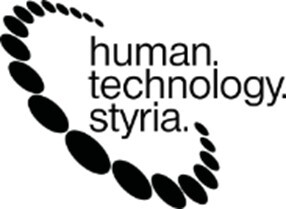Bluetooth and WiFi have become central connectivity standards for medical networks, digital health, and medical devices. They enable seamless data exchange, support remote monitoring, and enhance operational efficiency in healthcare settings.
Bluetooth in Medical Devices and Healthcare
Applications
Wireless Patient Monitoring: Bluetooth transmits patient data (e.g., heart rate, blood pressure, glucose levels) from medical devices to central monitoring systems or smartphones, enabling real-time, remote patient monitoring.
Wearables: Widely used in fitness trackers, glucose monitors, smartwatches, and smart medical clothing (e.g., smart T-shirts, smart diapers). These devices transmit health insights securely to healthcare providers.
Indoor Positioning & Asset Tracking: Bluetooth beacons track the location of medical equipment and personnel, improving resource management and response times in hospitals.
Telemedicine: Supports remote consultations by enabling the transfer of device data to clinicians during virtual visits.
Key Benefits
Low Power Consumption: Ideal for battery-operated wearables and sensors.
Short-Range, Secure Communication: Makes it well-suited for personal area networks within hospitals and homes.
Interference Mitigation: Uses adaptive frequency hopping to avoid crowded channels, reducing wireless interference in medical environments.
Easy Integration: Many medical and consumer devices are compatible, simplifying deployment.
WiFi in Digital Health and Medical Networks
Applications
Hospital and Clinic Networks: WiFi facilitates large-scale connectivity across departments—connecting EMR/EHR systems, imaging devices, and monitoring stations.
Remote Patient Monitoring: Enables transmission of continuous data from medical devices (e.g., infusion pumps, heart monitors) to the cloud or care teams in real time.
Telemedicine: Powers virtual consultations and remote diagnostics regardless of patient location.
Wearables and IoMT: Connects multiple devices simultaneously for data aggregation and real-time analysis as part of the Internet of Medical Things ecosystem.
Key Benefits
Wide Area Coverage: Connects many devices across large hospital campuses or home environments.
Integration Capabilities: Allows seamless data sharing between devices, healthcare providers, and cloud platforms.
Supports Advanced Applications: Critical for AI-driven analytics, big data, and real-time clinical decision-making.
Enhances Patient Engagement: Supports apps and portals for patients to access health information and telehealth services.
Comparative Table: Bluetooth vs WiFi in Healthcare
| Feature | Bluetooth | WiFi |
| Typical Range | 1–100m (short-range) | 10–100m+ (wide coverage) |
| Power Consumption | Very low | Moderate-high |
| Common Uses | Wearables, sensors, asset tracking, short distances | Medical networks, EHR, large device data streams |
| Data Rate | Up to 3 Mbps (BLE); higher for Classic Bluetooth | Up to multi-Gbps (WiFi 6/7) |
| Interference | Adaptive frequency hopping reduces interference | May be susceptible, requires robust management |
| Security Features | Advanced pairing, encryption | WPA2/WPA3, network security protocols |
| Best For | Personal, mobile, battery-powered devices | Hospital-wide or cloud-connected applications |
| Examples | Glucose meters, BP cuffs, smart garments | Infusion pumps, patient monitors, EHR terminals |
Security and Regulatory Considerations
Both Bluetooth and WiFi require strong security practices:
Encryption: Mandatory for protecting sensitive patient data.
Authentication: Multi-factor and device authentication are standard requirements.
Regulatory Compliance: Devices must comply with healthcare data standards (HIPAA in US, GDPR in EU, etc.).
Innovations and Future Trends
Bluetooth Low Energy (BLE): Enables multi-year battery life and supports mesh networking for wide hospital coverage.
WiFi 6/7: Brings high density, low latency, and robust connections ideal for expanding IoMT networks.
Device Interoperability: Growing trend towards unified ecosystems, integrating both Bluetooth and WiFi for flexible connectivity modes.
Conclusion
Bluetooth excels in low-power, secure, short-range device connections—ideal for wearables, sensors, and personal health gadgets.
WiFi provides high-speed, wide-area coverage that supports robust hospital operations, large medical data flows, and the growing ecosystem of connected healthcare devices and telemedicine services. Both technologies are foundational to the future of digital health and next-generation medical networks.
Sources
https://www.gethealthie.com/glossary/bluetooth
https://pmc.ncbi.nlm.nih.gov/articles/PMC10302901
https://www.actcorp.in/blog/role-wifi-advancing-healthcare-technology
https://www.qntmnet.com/wi-fi-in-healthcare-revolutionizing-patient-care-and-medical-technology
https://www.wi-fi.org/beacon/jay-white/the-benefit-of-wi-fi-connectivity-in-wearable-devices
https://starfishmedical.com/resource/digital-health-communication-technology/












